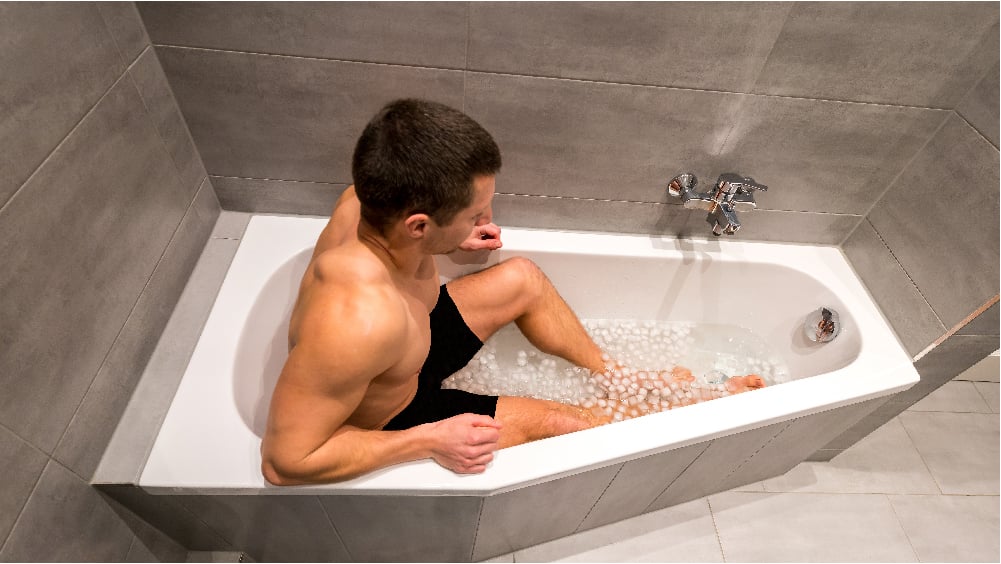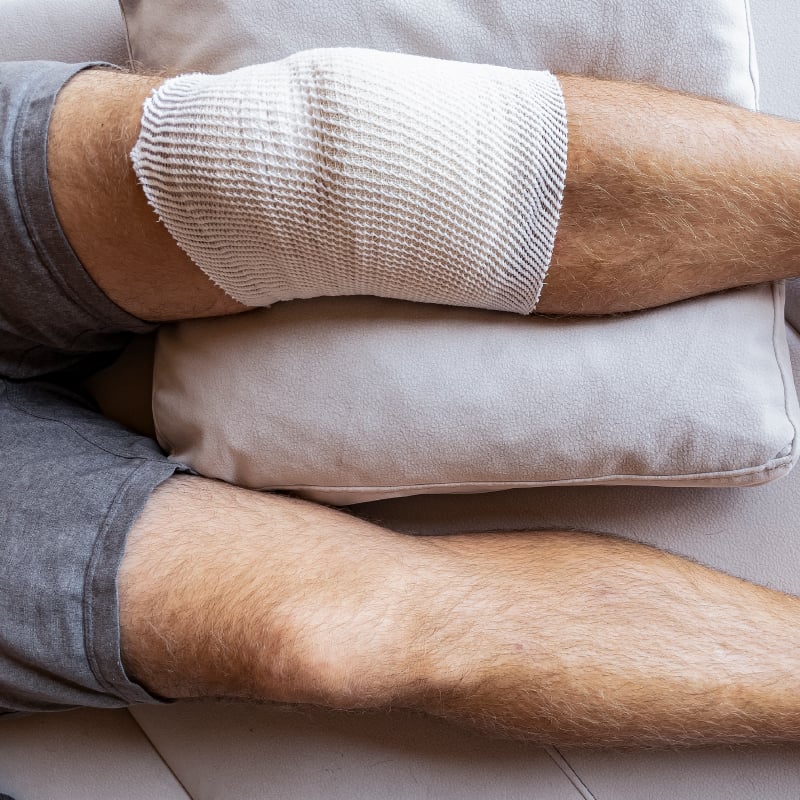Key Takeaways
- Cold water immersion therapy is usually used for athletes who want to reduce inflammation and soreness after a challenging workout.
- Ice cold showers are not the same thing as a cold plunge and don't offer the same therapeutic effects.
- People who have irregular heartbeats should avoid using cold water immersion therapy due to potential shock.
After a particularly intense workout or exercise session, some athletes may be looking for ways to help their body recover more quickly. Using cold water immersion therapy may help to improve strength and endurance, and shorten the body’s recovery.
Scott Biehl, DO, is an sports medicine and interventional orthopedist with Rochester Regional Health and explains who can benefit from cold water immersion therapy and how it will help.
What is cold water immersion therapy?
Practiced mostly by athletes, cold water immersion therapy is more or less an ice bath that is used as a way to help the body heal after a big event. These events are usually games or matches, or a particularly intense workout or training session.
Typically, cold water immersion therapy is done using a tub or a basin. A person will lower themselves into the tub, submerging their body from the neck down for 10 minutes or less. An optimal temperature is not listed in any official capacity, but generally most people have the water at or below 59°F (approximately 15°C) for one of these sessions.
While most people submerge their body from the neck down, immersion therapy can also be done on other areas – i.e., ankles, legs, waist, or chest.
“People who are doing cold water immersion therapy are usually trying to decrease the inflammatory pathways of the body using the cold water,” Dr. Biehl said. “There are several therapeutic effects that stem from its use.”
How it helps the body
Cold water immersion therapy is shown to help the body in a number of different areas, including
- Strength
- Fatigue
- Muscle soreness
- Inflammation
- Aerobic exercise performance
After a hard workout or a big game where a person has pushed their body particularly hard, their muscles and tissue will likely feel inflamed and painful. There are two main ways that the body benefits from cold water immersion: increasing hydrostatic pressure and reducing muscle temperature.
After exerting so much strain, a person experiences muscle swelling and fluid buildup. This is when hydrostatic pressure comes into play with inflamed muscles and tissue. Submerging the body in cold water creates hydrostatic pressure that pushes the metabolic waste created by inflammation back into the bloodstream to get rid of it more quickly. If left sitting in the muscles, that extra waste could delay a person’s recovery by a day or two.
Reducing muscle temperature is also key to recovery. When you are working on strengthening your muscles, you have to break down muscle in order to build it back up stronger. If you push your body hard, you can take it a little too far sometimes and cause your body to continue to break down muscles even after you’ve stopped a workout.
Using cold water therapy decreases the temperature of your muscles, which slows that breakdown and gives the body a chance to more efficiently rid of that extra waste material produced during a workout.
Most of the research related to cold water immersion therapy suggests people get the most benefit when it is used after a particularly intense event or training session, not after every single workout or practice.
The cold shower misconception
In recent years, some people have been touting the benefits of “ice cold showers” – sometimes making an indirect comparison to cold water immersion therapy and its health benefits.
However, when it comes to measuring the effects of a frigid shower, there does not appear to be a significant amount of data backing up those claims. Compared to immersion therapy, there is not the same benefit of attempting to heal exercise-induced stress on the body.
“A person may experience an increased level of alertness by stimulating a ‘flight or fight’ response in their body through a pain stimulus or a stimulus that your body doesn’t see routinely,” Dr. Biehl said. “So there may be a slight response in the short term. More funding and research is necessary to definitively assess the effects of ‘ice cold showers’ to determine if there is any sort of long-term benefit.”
Words of caution
In the initial stages of immersion, the cardio-pulmonary system can experience a type of shock due to the change in temperature. Because of this, this type of therapy should be avoided by people with a history of cardiac arrhythmia issues or autonomic dysfunction. The cold can affect the body’s sensory nerves and your response rate and potentially put you into a state of paralysis if you have these underlying issues.
If this is a type of therapy you are seriously considering and you have a history with either of these issues, consult your primary care provider first.









